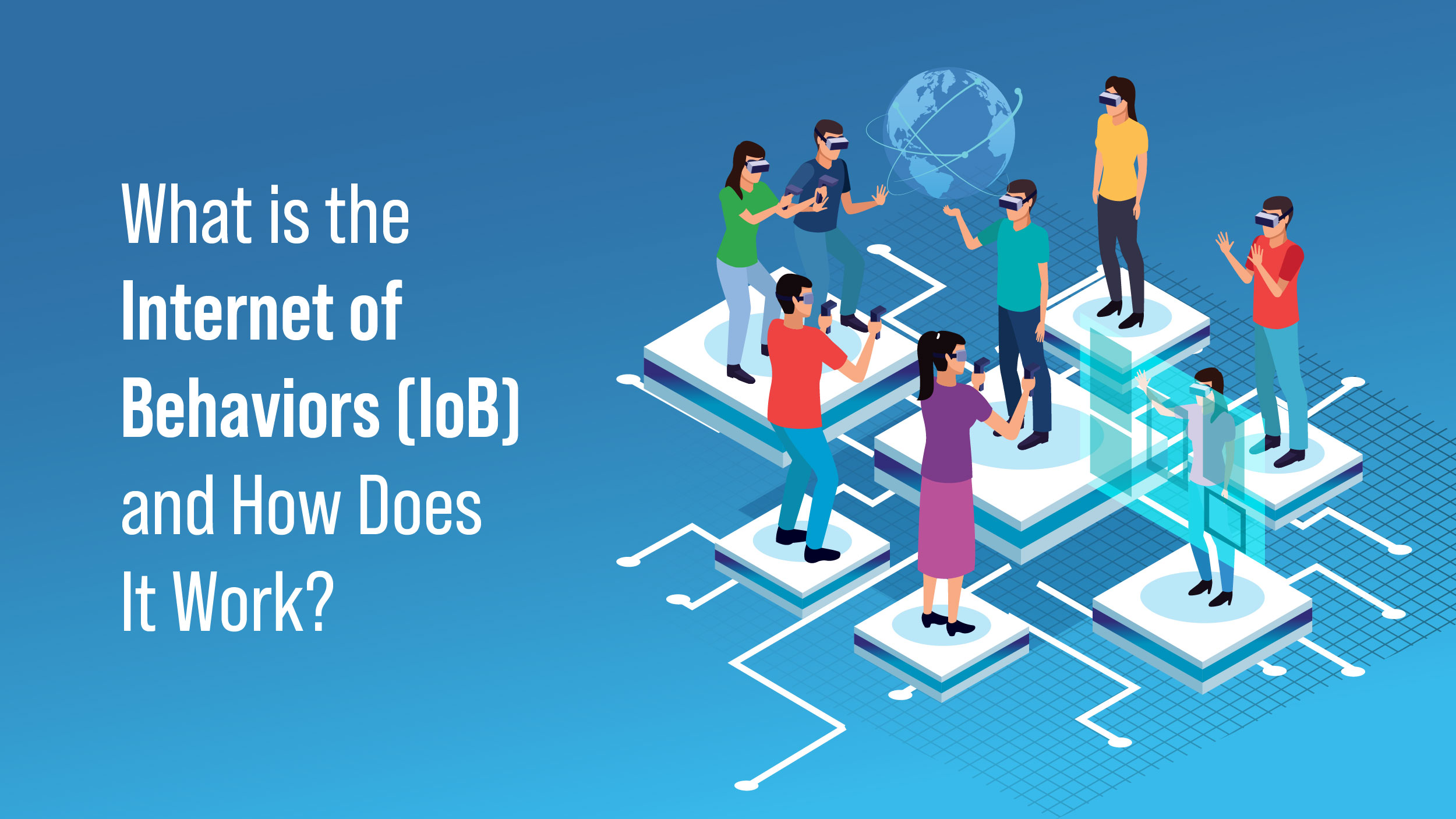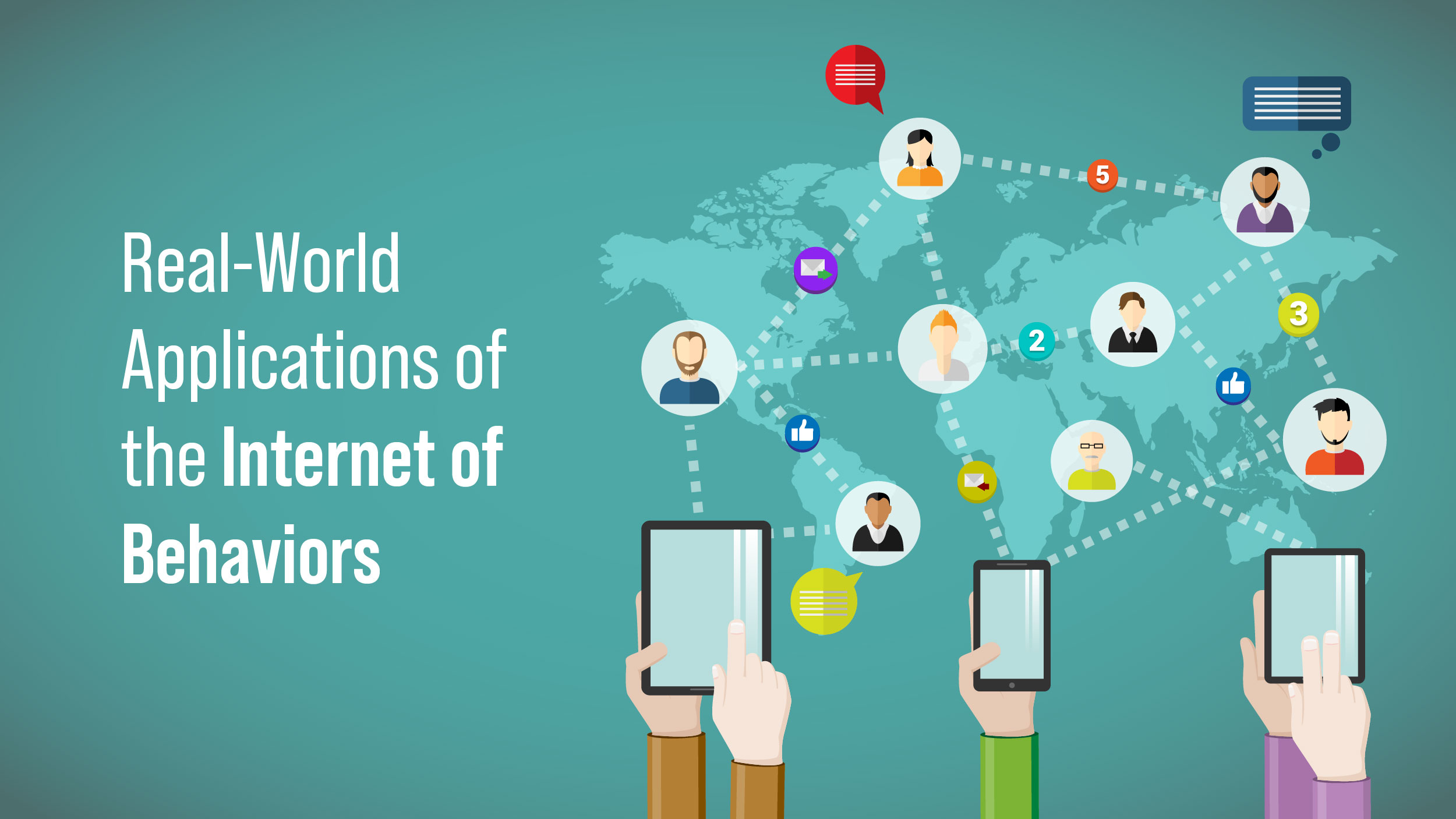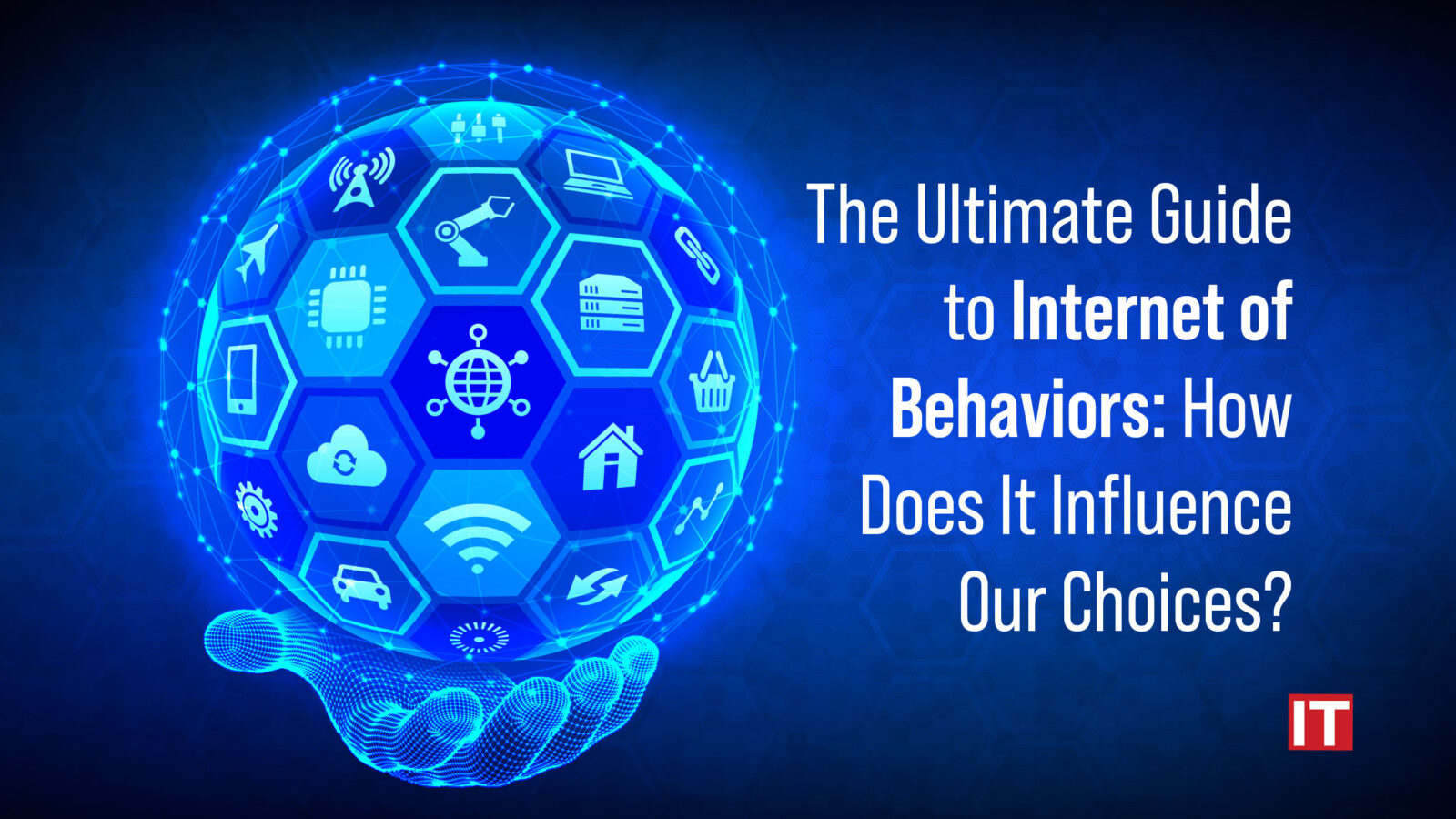Did you know that the number of IoT (Internet of Things) devices has doubled in the past five years? These devices are omnipresent in our lives, ranging from wearables that monitor fitness round the clock to those that remotely control home appliances.
The prevalence of mobile devices has transformed our interaction with the environment. The data collected by these IoT devices offers crucial insights into users’ behaviors, preferences, and interests, which has given rise to the concept of the Internet of Behavior (IoB). With this in mind, let’s explore the definition, benefits, and scope of application of IoB in detail.
What is the Internet of Behaviors (IoB) and How Does It Work?
 The term IoB refers to the collection and use of data to influence behavior. This information on user behavior and interests is gathered from household devices, online activities, and wearables. IoB uses cutting-edge technology and machine learning algorithms to analyze these behaviors by applying psychological ideas to tracking online brand interactions.
The term IoB refers to the collection and use of data to influence behavior. This information on user behavior and interests is gathered from household devices, online activities, and wearables. IoB uses cutting-edge technology and machine learning algorithms to analyze these behaviors by applying psychological ideas to tracking online brand interactions.
IoB is a synthesis of three fields, viz.
- Technology
- Data Analytics
- Behavior Science
Organizations can leverage the insights provided by IoB to increase productivity and COVID-19 protocol compliance. For instance, Uber uses IoT to keep an eye on its drivers and customers, utilizing surveys to assess passenger experience. By tracking driver behavior to evaluate passenger experiences and expediting feedback processes, moving to IoB can eliminate surveys.
Advantages of Internet of Behavior
The benefits of the Internet of Behavior (IoB), like those of other technologies, depend on the business or organization using it. These commercial advantages in sales, marketing, production, services, and customer experience are described below in light of the diversity of human behavior.
Benefits of IoB for Sales
- Utilize behavioral insights to enhance the conversion rate of prospects into sales.
- Enhance the efficiency of the sales team by tracking the behaviors of sales staff.
- Adapt the sales approach in real-time based on buyer engagement.
Benefits of IoB for Marketing
- Analyze behavioral information from contacts to assess the effectiveness of marketing.
- Marketing campaigns may be improved, and client targeting can be made more effective.
- Utilize internet of behavior data from many platforms to understand consumer buying habits, including favorite shopping times and locations.
- Launch real-time marketing alerts across various platforms and sales points under the guidance of behavioral data.
Benefits of IoB for Customer Experience
- Enhance user experiences through feedback-driven improvements in design.
- Elevate customer satisfaction by effectively responding to behavioral cues.
- Establish environments where real-time personalization aligns with user behavior and preferences.
Benefits of IoB for Production & Services
- Utilize behavior data analysis to gauge product demand and adapt production as needed.
- Access previously inaccessible data on interactions between prospects, customers, and your company’s offerings.
- Enhance production and service quality by analyzing staff behavior.
- Improve public health and safety by monitoring both customer and staff behavior.
- Convert IoT data into valuable IoB insights.
Real-World Applications of the Internet of Behaviors
 Research indicates that the IoB exerts its most substantial influence on marketing and retail, succeeded by entertainment, finance, healthcare, and education. To put it simply, Internet of Behaviors applications explain and revolutionize how we understand and respond to user interactions in a digitally connected world.
Research indicates that the IoB exerts its most substantial influence on marketing and retail, succeeded by entertainment, finance, healthcare, and education. To put it simply, Internet of Behaviors applications explain and revolutionize how we understand and respond to user interactions in a digitally connected world.
Let’s explore how the IoB technology can revolutionize these sectors.
1. The Internet of Behaviors in Retail
IoB and AI together cater to your preferences. These technologies examine your internet behavior, in-store activity, voice searches, and other activities to determine your interests. They then offer customized advice and creative marketing techniques. Google surveys and other tools improve this procedure.
It’s almost like having backstage access to each person when IoB is incorporated into online firms like Sweet Analytics to provide insights into customer behavior. This aids in selling products according to their preferences.
As evidenced by Zabka Nano shops, IoB is beneficial in physical stores as well. These stores follow your selections and instantly charge your card via QR code scans, all while utilizing cutting-edge cameras and easy-to-use software for self-checkout. The app gradually discovers your tastes and provides personalized recommendations for an optimized shopping experience.
2. Internet of Behaviors: Media and Entertainment Edition
To understand consumer preferences and meet their needs, the industry makes use of the IoB. In order to improve experiences, such as in gaming, IoB uses data from sources like virtual reality headsets. In the same way, the media sector makes use of IoB to offer users recommendations and personalized advertising, such as films that are to their liking.
In gaming, the metaverse, and entertainment, an Estonian business by the name of Cookie3 uses behavioral analytics on blockchain platforms. Through the analysis of elements like smart contracts and non-fungible tokens (NFTs), it is possible to discern customer behavior from historical data from virtual wallets.
3. The Convergence of Internet of Behaviors with Finance and Insurance
Financial institutions can use the Internet of Behaviors to enhance loan choices and credit scoring. They can identify low-risk clients this way and provide them with special interest rates and benefits.
This technology allows banks to identify odd transactions based on what suits each customer.
Car insurance firms can develop personalized premiums for safe drivers using IoT data such as speed, accident history, and DUI incidents.
IoB can also enable firms to track how customers use big purchases. For instance, Deloitte and Wikistrat discovered that banks may work with manufacturers. This helps banks offer loans proactively when items need fixing.
4. Healthcare Transformed by The Internet of Behaviors
The IoB is used in the healthcare industry to analyze real-time patient data from IoT devices monitoring vital indicators like blood pressure and heart rate. Based on this data, reminders are sent out when patients may have forgotten to take their medications.
Additionally, remote evaluation of patient treatment reactions is made possible by IoB solutions provided by IoT healthcare companies. Without a patient’s physical presence, doctors can determine the frequency of negative behaviors that damage their health.
A European study team used IoT devices to track the behavior of elderly people in order to diagnose Alzheimer’s disease early. The early stages of the disease were identified by this data-driven methodology.
5. A Powerful Fusion of Education and The Internet of Behaviors
Using student behavior data, educators tailor programs. Teachers can better understand learning trends by using the IoB in classrooms. This forecasts performance at the year’s end and identifies students who are vulnerable, even picking up on psychological problems. Apart from this, student attendance is tracked and data is collected in smart classrooms using RFID cards.
To cite an example, combining IoB with AI in the UAE enhanced student performance. A significant improvement was observed as a result of the system’s categorization of skills and personalization of recommendations based on areas of weakness, such as a 90% improvement in speaking and teamwork and a 95% improvement in writing and volunteering.
The Final Take on the Internet of Behaviors
The IoB comes with its share of advantages and disadvantages, much like any technological innovation. On the one hand, it holds the potential to simplify everyday life for consumers, enhance business activities, and improve governmental services for the public. However, as with any technology that gathers personal data, there’s a need to strike a delicate equilibrium between the convenience of personalized experiences and the privacy concerns.
By finding this balance, we can avoid unfavorable reactions from consumers who might feel uncomfortable with their privacy being compromised. As the IoB continues to evolve, navigating these challenges will be essential to harness its benefits while respecting individual boundaries.
































